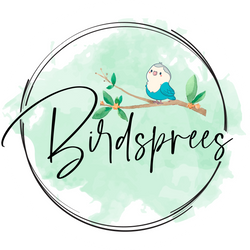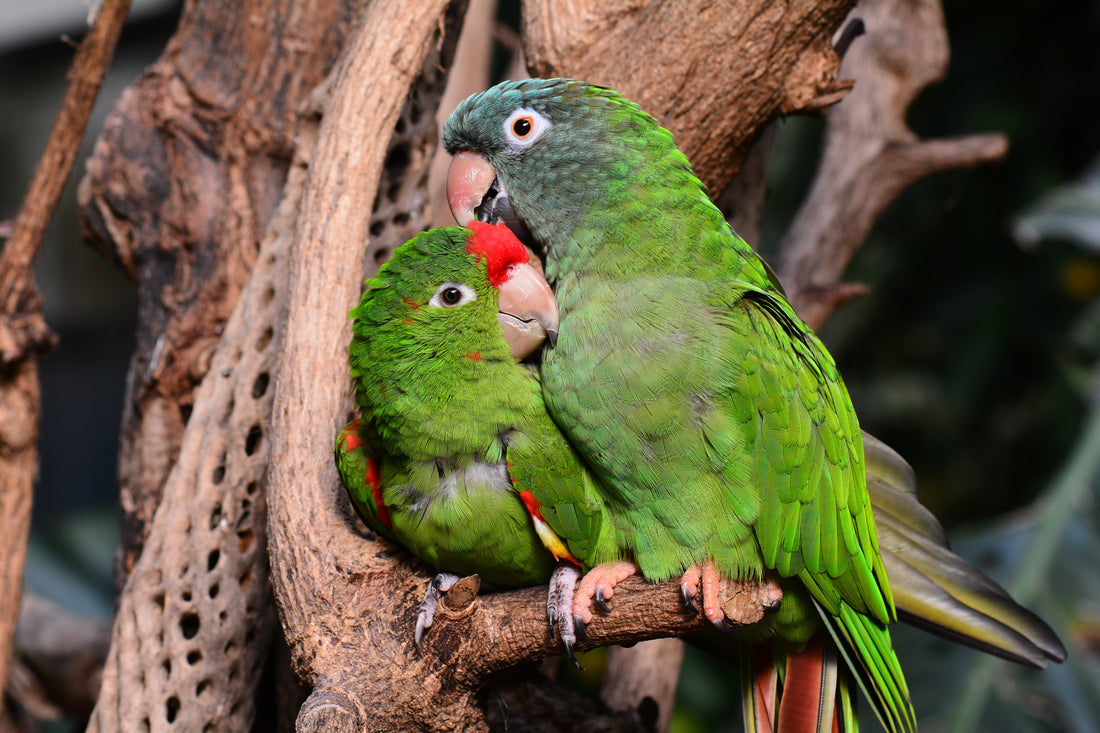What is foraging?
Foraging is the act of searching for and finding food. In the wild, birds spend a good part of their day foraging. They use a number of skills for finding food that engages them both physically and mentally. For many pet birds, however, foraging behavior rarely occurs because food is made readily available to them at all times. An activity that would normally occupy their time for several hours per day has been decreased to 20-30 minutes.
Why is foraging important for pet birds?
In the wild, foraging for food is part of a bird's daily routine and occupies a large portion of his time - in many cases over half of his waking hours. Wild birds spend most of their time in 4 activities: foraging, social interaction, feather care, and sleeping. If foraging activity is not encouraged in pet birds, they have many more hours per day with nothing to fill their time. In many cases, social interaction is also limited. So now we have a bird with only two other options - feather care and sleeping. Many times a bird will use the time on their feathers, and feather picking can result. This lack of foraging activity can affect a bird's physical and emotional well being causing boredom, behavioral problems (such as feather picking), and a lack of natural curiosity.
What are the benefits of foraging?
The obvious benefit to foraging is that your bird is kept busy and this helps to alleviate boredom and behavioral problems. Foraging challenges your bird by forcing him to look for his food instead of having it just put in front of him. Empty hours in the day will be filled with activity. He will have more physical exercise as he uses his beak and feet to remove what is hiding his food. He will need to use his problem-solving skills as wild birds do.
How can I provide foraging activities for my bird?
If foraging is new to your bird, you may have to start slowly making the food items easy to access at first, and then working towards more complicated and challenging methods that will keep him stimulated. In the beginning, let your bird see you hide his food or treats; he'll be curious as to what you're doing and will want to investigate.
What types of foraging methods are available for birds?
Wrapping: Place the food inside something safe for the bird, such as a coffee filter, cupcake paper or large lettuce leaf, and close the ends together by twisting them or fastening them with masking tape or a small piece of hemp rope. When using rope, make sure it is not frayed so your bird doesn't get his foot caught in it. Larger birds can handle the wrapped item with their feet; for smaller birds you can attach it to their cage and they can work on it while it is hanging.
Hiding: Place a small amount of food in the bird's food dish and bury it with polished stones, wood, beads, or shredded paper. Make sure items you are using to bury the food are too large for your bird to eat.
Covering: Place a paper towel or coffee filter over the food dish so the bird has to move it to get to his food. If this is new to your bird, you may need to pierce a hole in the paper so your bird can see there is food in the dish. When this gets easy for him, you can tape the paper to the dish with masking tape to increase the difficulty for him.
Offering the food outside of the food dish: Take a small piece of millet, fresh fruit, or vegetable and weave it between the cage bars. Birds that may not normally eat fresh fruits and vegetables are more likely to try it when it is hanging from the cage than when it is sitting in their food dish. Use food in its natural state, such as corn on the cob, carrots with tops, etc. Cut food into sticks so the bird needs to manipulate the food to eat it.
Using commercial toys: Foraging toys are readily available for you to purchase at pet stores and on-line. Some examples are:

Piñatas: You can fill a piñatas with your bird's favorite foods, hang it from your bird's cage, and let your bird tear and peck at the outside of the piñata until she reaches the treats inside.
Puzzle Boxes: These toys are usually made of acrylic and have openings that you can fill with your bird's favorite foods or treats. Some of these toys have openings that your bird needs to reach into to get the food out. Other puzzle boxes will require your bird to move panels or manipulate the toy in certain ways before the food is made available to them.
Kabobs: This is an easy and quick way to hang enticing fresh fruits and vegetables in your bird's cage. Simply stack the food on the skewer and hang from his cage, and it is ready to go. This encourages picky birds to sample fresh fruits and vegetables if they don't normally eat it from their dish. Make sure you buy skewers that are approved for birds so they cannot harm themselves on sharp ends.
As you can see there are a lot of different ways to encourage foraging with your bird and it does not have to cost you a lot of money. If this is new to your bird, start with simple techniques and move onto more complicated methods as your bird gets more curious. Have fun thinking of new ways for your bird to forage and be creative.
We have a great variety of bird toys that will help in your quest here - you can choose to simply stuff seeds into certain toys like Pinatas, or make them multi-leveled, such as wrapping food into cupcake papers and then hiding them in foraging toys such as these!
Adapted from http://www.peteducation.com/article.cfm?c=15+1794&aid=3482

